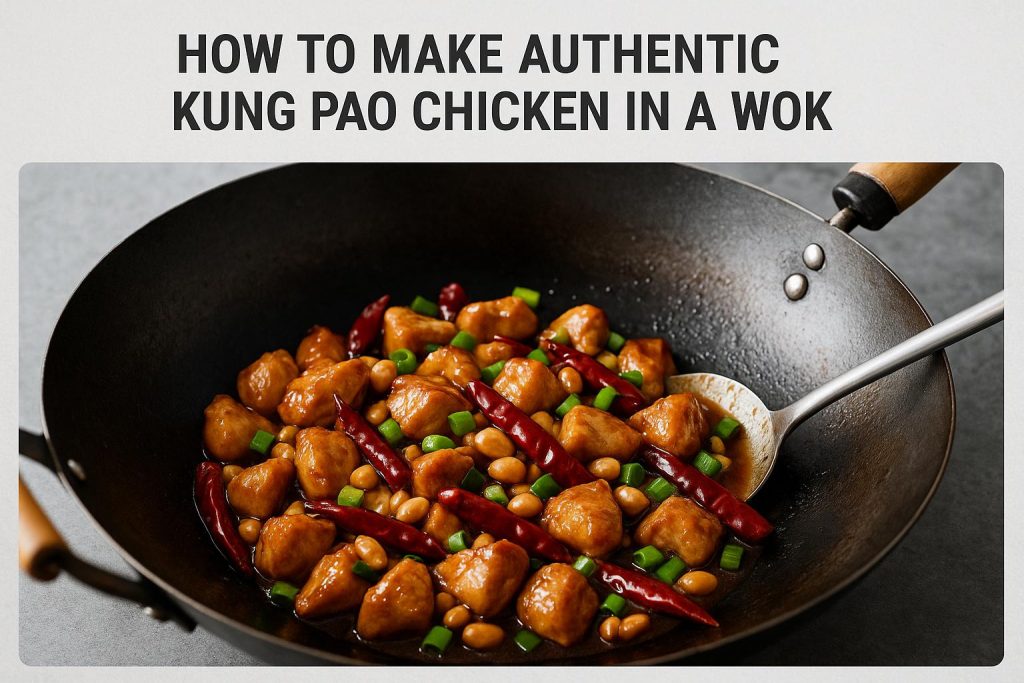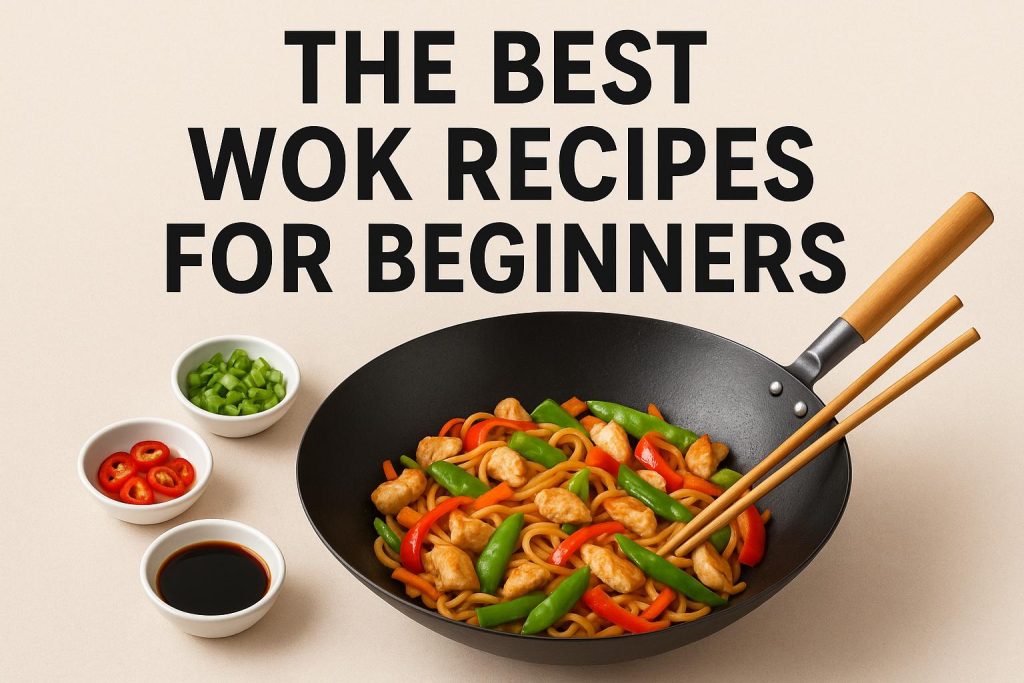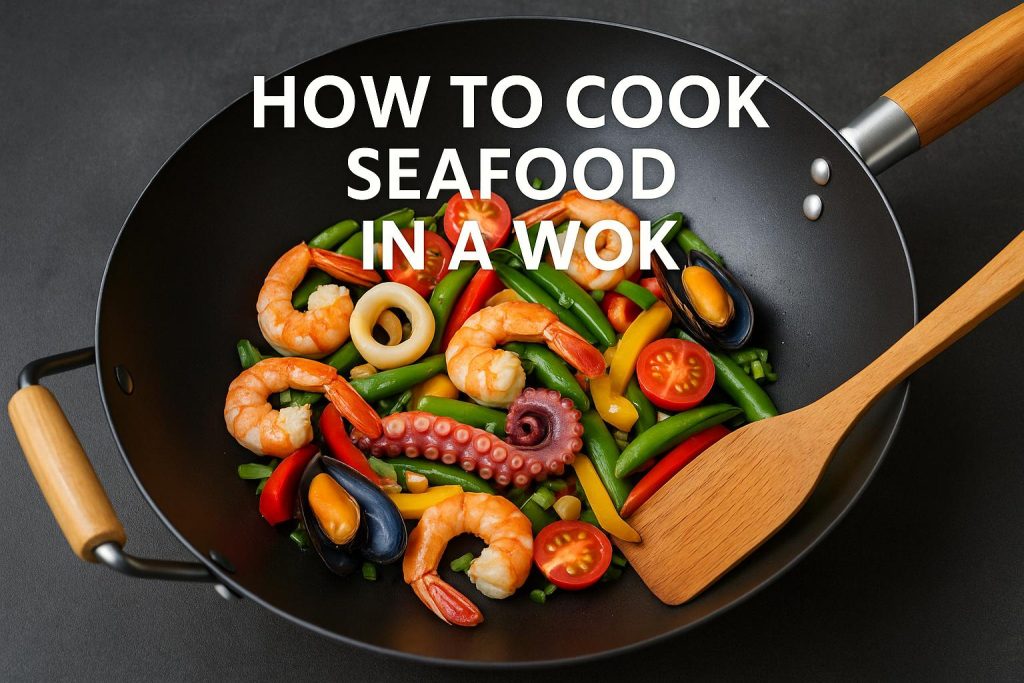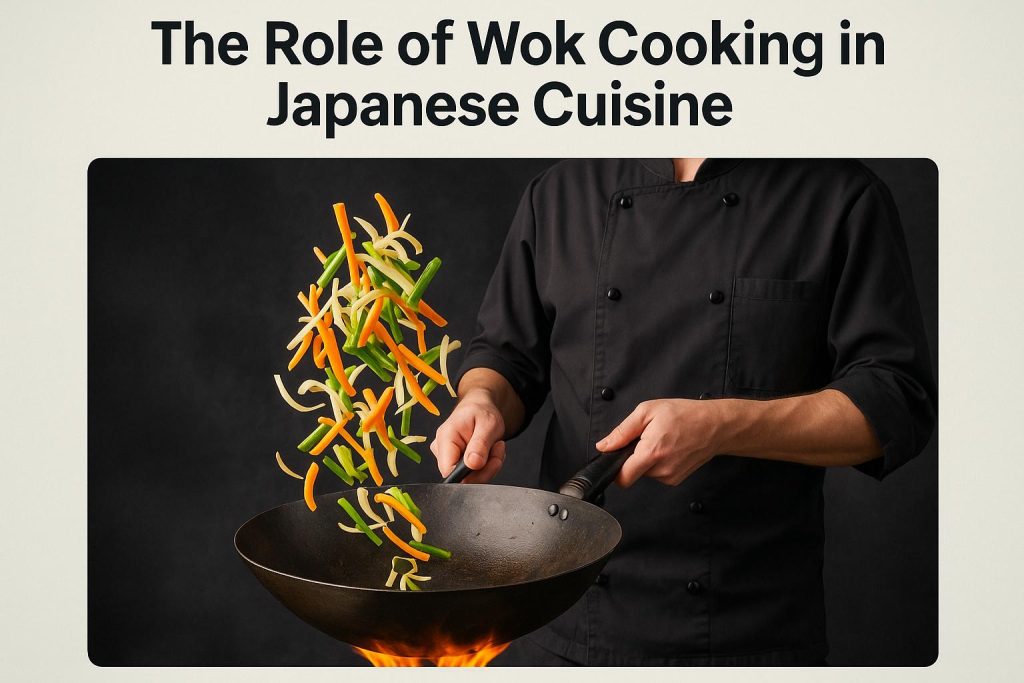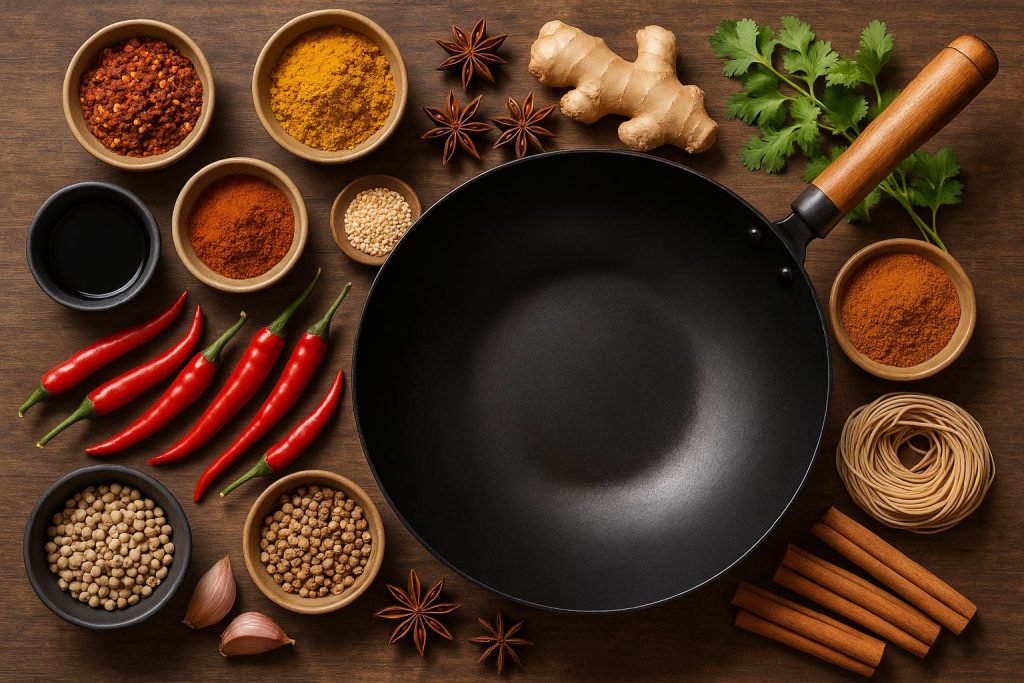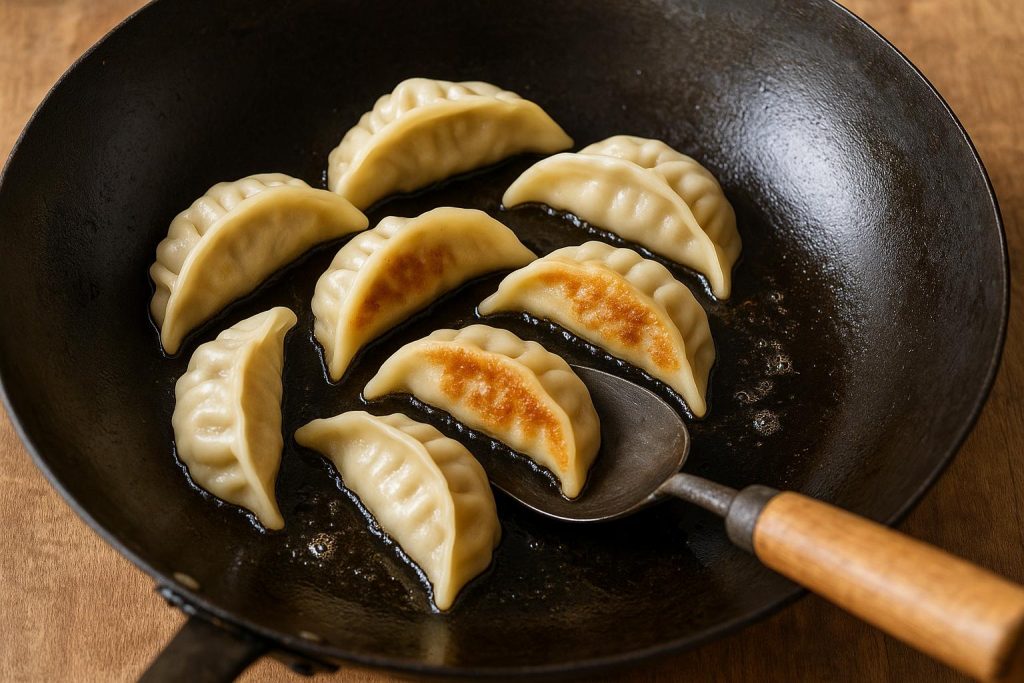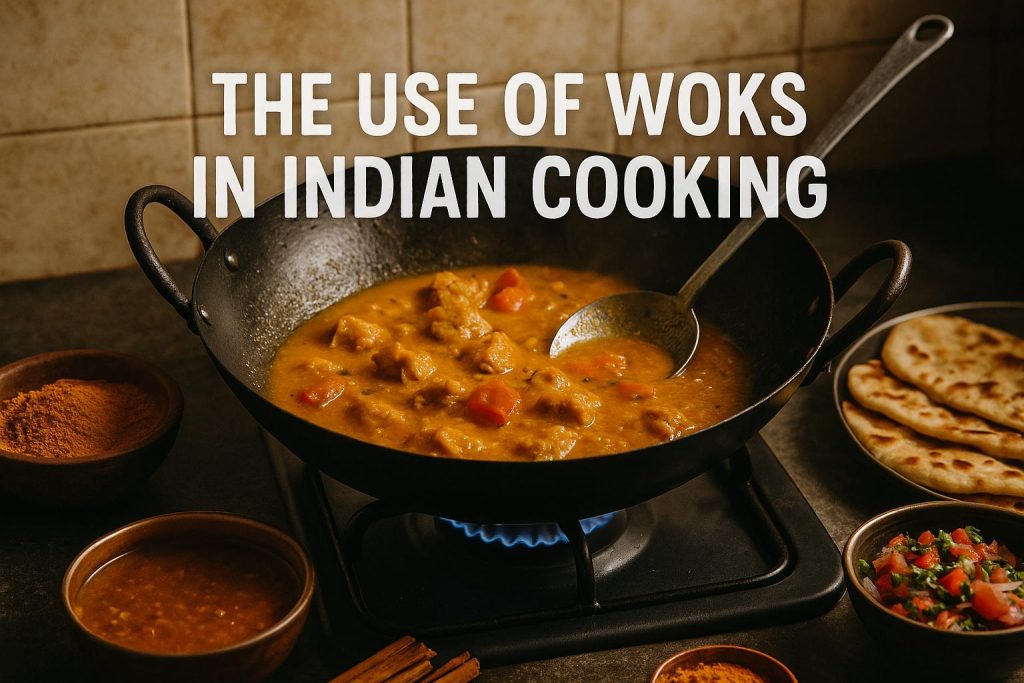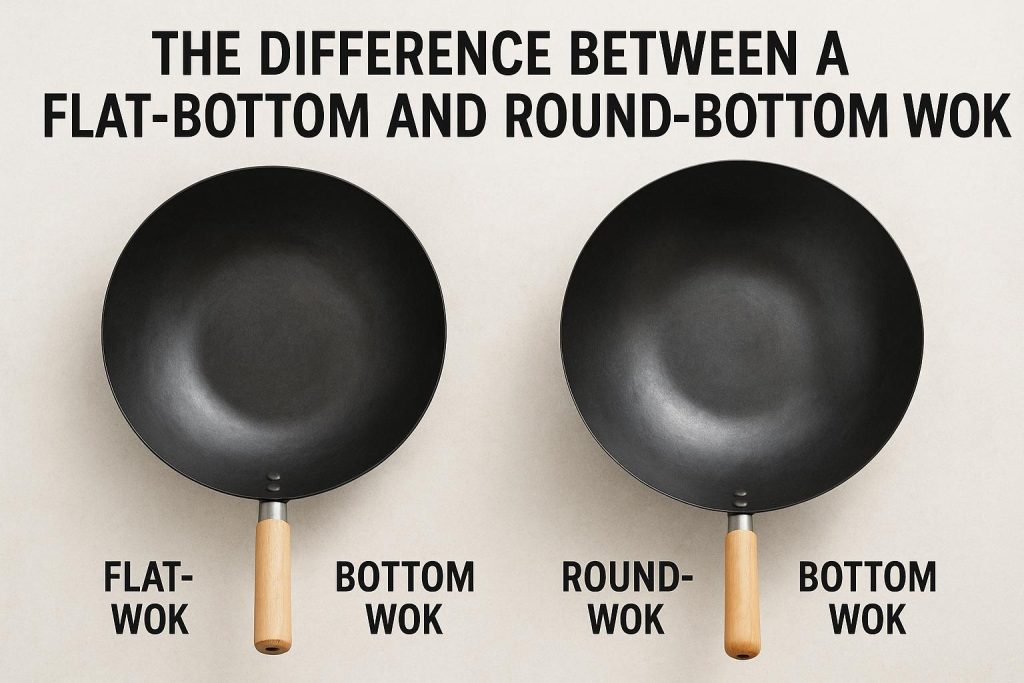Introduction to Kung Pao Chicken
Kung Pao Chicken is a quintessential dish in Chinese cuisine, celebrated for its compelling combination of flavors and textures. This dish brilliantly marries the contrasting elements of spicy, sweet, and savory, providing a culinary experience that is as exciting to the palate as it is to the senses. Originating from the Sichuan province of China, Kung Pao Chicken has gained international fame and recognition, primarily because of its unique use of Sichuan peppercorns and dried red chilies, which impart the dish’s characteristic heat and subtle numbing effect.
Essential Ingredients
Creating an authentic Kung Pao Chicken experience requires a well-selected list of ingredients that not only complement each other but are also vital to achieving the dish’s signature taste and texture.
Chicken: At the heart of the dish is the chicken, which forms the base around which the other flavors revolve. Opt for boneless, skinless chicken breast or thighs, cut into bite-sized cubes for consistency and ease of eating. Each cut should be uniform to ensure even cooking.
Marinade: The marinade plays a critical role in tenderizing the chicken, imparting flavor, and achieving the desired velvety texture. A combination of soy sauce, Shaoxing wine (a Chinese cooking wine, which can be substituted with dry sherry), and cornstarch is used to soak the chicken, enhancing its flavor and keeping it moist during cooking.
Sauce: The sauce is the core flavoring component, consisting of soy sauce, black vinegar, sugar, and sesame oil. This mixture not only adds a depth of flavor but also balances the dish by complementing the spiciness with sweetness and adding a hint of acidity.
Aromatics and Vegetables: Garlic, ginger, spring onions, and bell peppers are essential to add layers of flavor and color. These elements contribute to the dish’s aromatic quality and create a visual appeal that enhances the overall dining experience.
Nuts: Nuts provide a crunchy texture that contrasts with the tender chicken and soft vegetables. Traditionally, roasted peanuts are used, though cashews serve as a viable alternative for those with peanut allergies or for a mild sweetness.
Spices: Sichuan peppercorns and dried red chilies are indispensable, delivering the signature heat and the distinctive numbing sensation that characterizes Sichuan cuisine. These spices elevate the dish from the ordinary to the extraordinary.
Preparation Steps
Preparation is key to achieving a seamless cooking process. Having all ingredients and equipment ready before beginning will make the cooking experience efficient and more enjoyable.
1. Marinate the Chicken: In a bowl, combine the chicken cubes with the marinade ingredients: soy sauce, Shaoxing wine, and cornstarch. Allow the mixture to rest for at least 20 minutes. This resting period lets the flavors penetrate the chicken, ensuring each bite is flavorful and tender.
2. Mix the Sauce: In a separate bowl, whisk together the sauce’s ingredients: soy sauce, black vinegar, sugar, and sesame oil. This step prepares the foundation for the dish’s flavor profile, ready to coat every component once added to the wok.
3. Prepare the Wok: Heat the wok over a medium-high flame. Begin by adding a small quantity of oil and roasting the peanuts or cashews until they achieve a golden-brown color. This initial step ensures the nuts are ready to contribute their crunchiness to the final dish. Once roasted, set them aside for later use.
4. Sauté Aromatics: Introduce more oil into the wok and add the garlic, ginger, and dried red chilies. Fry these ingredients until they release their fragrance, a critical step in building the dish’s aromatic base. Add Sichuan peppercorns to introduce additional depth and the characteristic heat.
5. Cook the Chicken: Incorporate the marinated chicken into the wok, stir-frying until it is cooked through and exhibits a golden-brown exterior. This stage is crucial in layering flavors, with the marinade caramelizing slightly during cooking.
6. Add Vegetables: Add the bell peppers and spring onions, stir-frying for a short duration to maintain their crispness. The inclusion of vegetables not only enhances the dish’s nutritional value but also contributes a vibrant color contrast.
7. Combine: Reintroduce the roasted nuts into the wok. Pour in the prepared sauce, ensuring even distribution and thorough coating of all components. The dish’s flavors should meld into a harmonious blend, with each bite delivering the signature balance of flavors synonymous with Kung Pao Chicken.
Serving Suggestions
Kung Pao Chicken is traditionally served hot, providing a comforting and satisfying meal. Pair it with steamed rice, which effectively absorbs the delicious sauce, enhancing the eating experience. For those seeking variety, serve it alongside fried rice for a more indulgent meal. Garnishing with additional spring onions or sesame seeds can elevate both the flavor and visual presentation, adding a final touch of freshness and elegance.
Conclusion
Kung Pao Chicken remains a beloved staple within Chinese cuisine, revered for its distinct and harmonious blend of flavors and textures. Mastering this dish at home not only allows for an appreciation of its culinary artistry but also grants the opportunity to partake in a tradition that has captivated taste buds worldwide. For enthusiasts eager to delve deeper into authentic Chinese culinary practices, engaging with reputable culinary resources can offer valuable insights and further inspiration. Exploring guides and recipes from specialists in Sichuan food, like those available on China Sichuan Food, can provide a deeper understanding and appreciation of traditional cooking techniques, opening the door to a vast world of flavors waiting to be discovered.
Introduction to Wok Cooking
Wok cooking represents a versatile and dynamic culinary experience that is ideal for preparing a plethora of dishes. Originating from China, the wok has become an iconic kitchen tool, renowned for its distinctive shape which facilitates efficient heat conduction. This unique feature makes it particularly suitable for a variety of cooking methods, including stir-frying, steaming, and even deep-frying. For beginners embarking on their cooking journey, mastering the art of wok cooking can unveil a realm of flavorful and swift meal preparation.
Choosing the Right Wok
When delving into the world of wok cooking, selecting the right type of wok is a crucial step. The carbon steel wok is highly recommended due to its lightweight build and excellent heat conduction properties. This type of wok also possesses the ability to develop a natural non-stick surface over time, provided it is properly seasoned and maintained. The process of seasoning involves applying oil to the wok and heating it, allowing the oil to polymerize and create a smooth cooking surface. This not only enhances the wok’s efficiency but also prolongs its durability. For those eager to learn more about selecting and maintaining a carbon steel wok, numerous culinary websites such as wokexpert.com offer valuable insights and guidance.
Essential Tools for Wok Cooking
In addition to the wok itself, there are several essential tools that can greatly enhance the cooking experience. A spatula is indispensable for wok cooking, aiding in the continuous stirring of ingredients to ensure even cooking. The spatula is best made of steel or bamboo, which can withstand the high temperatures typical of wok cooking. Another important component is a high-heat oil, such as peanut or canola oil. These oils are chosen for their ability to tolerate the high temperatures required in wok cooking without breaking down and losing their flavor. Furthermore, a spider skimmer proves to be an invaluable tool when you’re incorporating deep-frying techniques, as it allows for efficient draining of fried foods without the mess.
Simple Chicken Stir-Fry
One of the most straightforward yet delicious dishes to prepare in a wok is a chicken stir-fry. This dish not only serves as a staple in many cuisines but also provides an excellent starting point for beginners aiming to hone their wok cooking skills.
Ingredients:
Chicken breast, sliced; bell peppers; broccoli; soy sauce; ginger; garlic; peanut oil.
Instructions:
1. Begin by heating the wok over high heat until it gently smokes, signaling readiness.
2. Add a tablespoon of peanut oil, followed by the quick addition of sliced ginger and garlic to infuse the oil with flavor.
3. Stir in the sliced chicken, cooking it until it loses any pinkness, ensuring it’s thoroughly cooked.
4. Incorporate the bell peppers and broccoli, maintaining a constant stir to promote even cooking and vibrant colors.
5. Finally, pour in the soy sauce, tossing all ingredients to ensure an even coat of flavor.
For those seeking more detailed recipes and additional tips, numerous websites dedicated to Asian cooking offer an abundance of resources.
Vegetable Fried Rice
Utilizing a wok for preparing fried rice results in a dish that offers a delightful balance of textures and flavors, making it a perennial favorite among rice dishes.
Ingredients:
Cooked rice; onion; peas; carrots; eggs; soy sauce.
Instructions:
1. Commence by heating oil in the wok and introducing diced onions to begin the aromatic foundation.
2. Add the peas and carrots, cooking until they achieve a tender consistency but with a slight crispness.
3. Shift the vegetables to the side, creating space to scramble two eggs in the cleared area, allowing them to integrate smoothly.
4. Continue by incorporating the cooked rice, ensuring thorough mixing of all ingredients for an even distribution of flavors.
5. Complete the dish with a generous splash of soy sauce, fine-tuning the taste to your preference.
Conclusion
By embarking on these basic recipes, beginners can steadily build confidence in their wok cooking skills. As familiarity with the wok increases, the prospect of exploring more complex techniques and diverse recipes becomes an enticing culinary exploration. It is important to remember that practice is key in perfecting the art of wok cooking. The more you engage with your wok, the more proficient you will become, resulting in consistent and delicious results. For additional reading and advanced recipes, exploring culinary blogs and dedicated cooking platforms can expand your knowledge and skills, transforming your culinary repertoire into an expansive array of flavorful dishes.
Introduction to Cooking Seafood in a Wok
Cooking seafood in a wok is an efficient and versatile method for preparing a flavorful meal. Woks are well-suited for quick cooking at high temperatures, which helps to preserve the delicate texture and taste of seafood. Mastering this technique involves understanding the wok’s unique properties and selecting the right seafood and ingredients to achieve the best results.
Choosing the Right Seafood
Selecting fresh seafood is crucial, as it greatly impacts the final dish’s flavor and texture. While you can experiment with various types of seafood, there are a few common choices that are particularly well-suited for wok cooking, such as shrimp, scallops, squid, and certain types of fish. Each type of seafood requires slightly different handling, so gaining an understanding of these nuances can significantly elevate your cooking.
Shrimp: When preparing shrimp for cooking in a wok, it is important to de-vein and peel them beforehand. Shrimp cook quickly and are best added towards the end of the cooking process to prevent them from becoming overcooked and rubbery.
Scallops: For the best results, select dry-packed scallops instead of wet-packed ones. Pat the scallops dry before cooking to achieve a good sear. A well-seared scallop will have a caramelized crust on its surface, enhancing its texture and flavor.
Squid: To prepare squid for cooking, cut it into rings or strips. Squid benefits from brief cooking as extended periods of heat result in a rubbery texture. The rapid heat of a wok ensures squid remains tender and flavorful.
Fish: Opt for firmer varieties of fish, such as salmon or halibut, as they are more likely to hold their shape during cooking. These types of fish fare well in a wok’s high heat and can deliver satisfying flavor and texture when cooked correctly.
Preparing Seafood for the Wok
Proper preparation of your seafood is paramount to ensure the best results when cooking. Start by making sure the seafood is thoroughly cleaned and cut into uniform pieces. Uniformity in size allows for even cooking, which is particularly important when using high-heat methods in a wok.
Marinating is a technique that can enhance the flavor and texture of seafood. Common marinade ingredients include soy sauce, ginger, garlic, and a splash of sesame oil. These elements impart savory and aromatic notes that complement the natural tastes of the seafood. Allow the seafood to marinate for at least 15 minutes before cooking, but avoid over-marinating as it can affect the seafood’s texture.
The Importance of Wok Preparation and Cooking Techniques
The preparation and cooking technique applied to the wok are as vital as the seafood itself. Proper preparation of the wok ensures that the seafood cooks efficiently and does not stick to the surface.
Seasoning the Wok: If you are using a new wok, seasoning it is necessary. To season, apply a light coat of oil and heat it until the wok reaches smoking temperature. This process builds a protective layer on the surface of the wok, allowing for non-stick cooking and protection against rust.
Preheat the Wok: Always ensure that the wok is preheated until it’s smoking hot before adding any ingredients. This high heat is crucial for successful stir-frying and quick cooking, characteristics for which the wok is renowned. Cooking at lower temperatures can lead to undesirable results, such as steaming instead of searing.
Cooking Order: To achieve the best texture, start by cooking the seafood separately from other ingredients. This method helps avoid overcooking, which could result in tough or rubbery seafood. Cooking proteins separately also allows you more control over the final texture and flavor.
Accompaniments and Final Touches
Seafood cooked in a wok can be enhanced by adding a variety of vegetables and certain garnishes. Vegetables like bell peppers, snap peas, or bok choy are excellent options, as they add both color and nutrients to the dish. The vibrant reds, greens, and yellows from these vegetables not only make your dish more visually appealing but elevate its nutritional profile as well.
For added flavor, consider incorporating scallions, cilantro, or a squeeze of lime at the end of the cooking process. Scallions and cilantro provide freshness and a burst of flavor, while a touch of lime juice can accentuate the seafood’s flavor with its citrusy, tangy taste.
Conclusion
Cooking seafood in a wok offers a culinary adventure that is both straightforward and rewarding. By choosing fresh seafood, paying attention to preparation, and effectively using the wok’s high-heat capabilities, you can craft a variety of flavorful and nutritious dishes. The techniques discussed are a foundation upon which you can build more complex recipes as your confidence grows.
Exploring further resources can deepen your understanding and skill set in wok cooking. Consider sources such as culinary schools, cooking classes, or trustworthy cooking websites to expand your repertoire. As you become more familiar with this cooking process, the possibilities for creative and delicious seafood dishes are virtually limitless.
The Significance of Wok Cooking in Japanese Cuisine
Wok cooking, often synonymous with Chinese culinary techniques, has carved out a unique and influential niche in Japanese cuisine. Though the wok is not the mainstay of traditional Japanese kitchens, its adaptability and efficiency have made it a valuable addition to the contemporary Japanese culinary landscape.
The Introduction of the Wok in Japan
Japan’s introduction to the wok can be traced back to its historical cultural and culinary exchanges with China. These interactions brought the wok to Japanese shores, where its capability to cook food swiftly at high temperatures was seen as an appealing innovation to the established cooking traditions. With increasing globalization, the exchange of international culinary tools and techniques surged, leading to the natural incorporation of the wok into the broader spectrum of Japanese cooking.
Characteristics of a Wok
A wok is a versatile, round-bottomed cooking vessel known for its high efficiency in evenly conducting heat. The design of a wok allows for fast cooking, which is beneficial for methods that require precise temperature control, such as stir-frying, steaming, and deep-frying. In Japanese cuisine, its shape and construction enhance the flavor and texture profiles of various ingredients, offering a means to expand and diversify cooking styles. For example, when used in stir-frying, the sloped sides of a wok allow the chef to quickly toss ingredients, ensuring even cooking.
Applications in Japanese Dishes
Within Japan, the wok’s utility is evident in a variety of modern dishes, especially in urban areas and fusion restaurants where new culinary traditions are embraced. While traditional Japanese cooking tends to favor implements such as the *donabe* (a type of earthenware used for slow cooking) and *nabe* (a communal pot often used in simmering dishes), the wok offers an efficient alternative.
Stir-Frying
Stir-frying is perhaps the most common application of the wok in Japan. This method allows for rapid cooking that preserves the nutrients and natural flavors of the ingredients, a principle highly valued in Japanese cuisine. The ability to quickly seal in these elements has made stir-frying an indispensable technique in modern variations of vegetable and meat dishes.
Tempura
Although tempura—a traditional dish of battered and deep-fried seafood or vegetables—is typically prepared in a heavy-bottomed pot, the wok’s design can also be leveraged for this purpose. The even heat distribution and depth of a wok offer consistent temperature control, which is critical to achieving the light, crisp finish that is the hallmark of good tempura.
Yakisoba
Another dish where wok cooking plays a role is *yakisoba*, a popular street food. This dish consists of Japanese noodles coupled with vegetables and meat, rapidly fried to create a flavorful mix of ingredients. The wok’s functionality in quickly distributing heat facilitates the creation of yakisoba with the desired texture and complexity of taste.
Modern Influence on Japanese Home Cooking
The impact of wok cooking is not restricted to professional settings; it has permeated into Japanese homes as well. The advent of electric woks and hybrid cookware has made it feasible for more households to explore wok-based cooking. This evolution in home cooking equipment reflects changes in culinary preferences and practices, driven by a desire for versatile and efficient cooking methods.
Adoption and Adaptation
The integration of wok techniques into Japanese home cooking showcases an adaptation to local tastes and cultural heritage. For instance, many families find the wok’s utility in preparing one-pan meals to simplify traditionally intricate recipes without sacrificing flavor or heartiness. This approach resonates well with modern lifestyles that prioritize convenience amid busy schedules.
The Future of Wok Cooking in Japan
As Japanese cuisine continues to develop and adapt, the wok is expected to remain a significant tool for culinary innovation. The current trends emphasizing health-conscious and convenient cooking drive the pursuit of methods that preserve nutritional integrity while delivering authentic taste. The wok, with its capacity for quick and efficient cooking, aligns well with these modern culinary trends.
In conclusion, the role of wok cooking in Japan is a testament to the dynamic nature of culinary traditions, reflecting how cultures can borrow and adapt tools and techniques to enhance their own practices. For anyone interested in understanding the evolving nature of Japanese cuisine, a deeper exploration of resources from culinary schools and academic publications may provide valuable insights.
Introduction to Wok Cooking
Wok cooking is a fundamental aspect of Asian culinary practices, known for offering methods that are both dynamic and time-efficient. This style of cooking results in meals that are profoundly rich in flavor, giving the cuisine its legendary status. The efficiency and appeal of wok cooking are not only attributed to the high temperatures and distinctive curved design of the wok itself but also significantly depend on the deliberate use of spices and seasonings. These components are crucial in many dishes, as they can greatly enhance both the taste and aroma, creating an unforgettable culinary experience.
The Role of Spices in Wok Cooking
In wok cooking, spices play a pivotal role as they are pivotal in adding depth and complexity to a dish. When integrated correctly, spices can provide a perfect balance of flavors, offer varying levels of heat, and convey the authentic characteristics of traditional Asian cuisines. The method of incorporating spices is crucial to achieving the desired flavor profile. Some spices are best infused into the cooking oil right from the start, allowing their essential oils to perfuse the dish thoroughly. Others are best reserved until the final stages of cooking so that their freshness and aromatic qualities are preserved.
Essential Spices for Wok Cooking
Several spices are considered essential in the arsenal of most wok recipes, each adding unique elements to the flavor profile of the dish:
Ginger: Fresh ginger is a staple in wok cooking, bringing a pungent and spicy undertone that harmonizes well with both meats and vegetables. Typically, ginger is either sliced or julienned and then stir-fried at the very beginning of the cooking process. This technique allows its fragrance and flavors to infuse the oil, setting a foundational layer of taste for the entire dish.
Garlic: Often used alongside ginger, garlic is integral to many wok-cooked dishes. It contributes a rich, savory base, enhancing the overall taste profile with its aromatic nature. Its versatility ensures that it can complement nearly any type of dish prepared in a wok.
Sichuan Peppercorns: These uniquely contribute to the sensory experience of wok dishes by offering a numbing and tingling sensation paired with a distinctive citrus-like flavor. Sichuan peppercorns are a hallmark of Sichuan cuisine, known for their ability to add an unexpected yet delightful twist.
Key Seasonings for Authentic Flavors
Seasonings are as crucial as spices in cultivating the rich and authentic flavors characteristic of wok cooking. They deliver a delightful balance of salty, sweet, and umami notes:
Soy Sauce: Available in both light and dark varieties, soy sauce is a cornerstone of Asian cooking. In wok preparations, light soy sauce is typically employed for seasoning due to its less intense flavor and color. In contrast, dark soy sauce is reserved for dishes that benefit from a deeper, richer hue and more complex taste.
Oyster Sauce: This thick, savory sauce is cherished for its profound umami flavor. It is a quintessential ingredient found in many stir-fries, where it provides a substantial depth and dimension to the meal.
Fish Sauce: Known for its intense umami profile, fish sauce is often used to elevate the flavors of dishes cooked in a wok, especially when paired with seafood or chicken. A little goes a long way, making it a powerful tool in flavor enhancement.
Additional Ingredients for Complexity
Beyond the staple spices and seasonings, there are additional ingredients that can introduce new layers of flavor complexity to your wok-cooked dishes:
Fermented Black Beans: With their strong, savory flavor, fermented black beans are an excellent pairing with garlic. They are typically used to enhance the flavor profile of meats and vegetables in wok dishes, providing an intriguing depth and earthiness.
Sesame Oil: Often used as a finishing oil, sesame oil imparts a nutty aroma when drizzled over a completed dish. Its distinct fragrance is a welcome addition to many wok dishes, adding a compelling dimension once cooking is complete.
Chili Paste: For those who relish the inclusion of heat in their meals, chili paste is an excellent addition, introducing a desired level of spiciness. The intensity of the heat can vary from mild to fiery, depending on the blend used, allowing for customization based on personal preference.
Conclusion
Acquiring proficiency in the use of these spices and seasonings can transform your wok cooking from simple culinary ventures to extraordinary gastronomic experiences. While understanding and mastering traditional applications is pivotal, it is equally rewarding to experiment with varying quantities and combinations. Such explorations can lead to delightful and often unexpected discoveries in your kitchen. For those seeking more in-depth techniques and recipes, a wealth of resources are available, including dedicated sites on culinary arts and global cuisines. These resources can offer valuable insights and broaden your understanding of the rich tapestry that is wok cooking.
Introduction
Stir-fry is a popular cooking technique that is celebrated for both its speed and health benefits. This method involves the rapid cooking of bite-sized pieces of food over high heat with a minimal amount of oil. The result is a dish that retains the vibrant flavor and nutritional value of its ingredients, making it an excellent choice for those aiming to achieve a balanced meal. In this article, we will delve into the details of how to prepare a quick and healthy stir-fry meal, exploring each step in the process from ingredient selection to cooking and serving.
Choosing Ingredients
The success of a stir-fry hinges on the selection and preparation of ingredients. It is crucial to select a diverse array of colorful vegetables alongside a reliable protein source to ensure the dish is both complete and nutritious.
Vegetables
When selecting vegetables for your stir-fry, it is best to opt for fresh, seasonal options whenever feasible. These are not only more flavorful but also retain a higher nutritional value. Common vegetable choices include:
Broccoli: Known for its myriad health benefits, broccoli adds a nice crunch and vivid green color to the dish.
Bell Peppers: Available in various colors such as red, yellow, and green, bell peppers provide sweetness and visually appealing colors to the stir-fry.
Carrots: A popular choice for their natural sweetness and high vitamin content.
Snap Peas: These add a sweet taste and crisp texture that complements other ingredients.
Mushrooms: Known for their umami flavor, mushrooms enrich the dish’s overall taste.
It is important to cut all vegetables into similar-sized pieces to promote even cooking throughout the dish.
Protein Sources
A critical component of a well-rounded stir-fry is the inclusion of a protein source. Protein can come from various options, including:
Chicken: A lean protein choice that pairs well with a variety of flavors.
Beef: Known for its richness, beef can add depth to your stir-fry.
Tofu: An excellent vegetarian alternative that absorbs flavors well.
Shrimp: A quick-cooking option that adds a different texture and satisfies seafood lovers.
To enhance the flavor, marinate your chosen protein source. A basic marinade might consist of soy sauce, garlic, and ginger, which complements the other ingredients and adds additional layers of taste.
Cooking Process
Preparation
Before embarking on the cooking process, ensure all ingredients have been washed, chopped, and appropriately prepared. Having everything ready in advance allows for a more streamlined and efficient cooking phase.
Cooking Steps
Heat the Wok or Pan: The wok is traditionally used for stir-frying as it evenly distributes heat. However, if unavailable, a large frying pan is also suitable. Begin by heating the wok or pan over high heat.
Add Oil: Introduce a small quantity of oil into the pan. Oils such as vegetable, canola, or sesame are ideal as they have high smoke points suited for stir-frying.
Cook Protein: Once the oil is heated, add the marinated protein to the pan. Stir the protein continuously until it is fully cooked through. Once complete, remove it from the pan and set it aside.
Cook Vegetables: Begin by adding vegetables to the pan, starting with those that take longer to cook, such as carrots. Stir regularly to ensure the vegetables are cooked evenly and remain slightly tender while still crisp.
Combine Ingredients: Return the cooked protein to the pan, combining it with the vegetables. Add any desired sauces or seasonings at this stage. Popular choices include soy sauce, oyster sauce, or teriyaki sauce. Continue to stir-fry the mixture for a few more minutes, allowing the flavors to meld together.
Serving Suggestions
Once cooking is complete, serve the stir-fry immediately while it is hot to ensure that the vibrant flavors are intact. Stir-fry pairs well with a variety of side dishes such as steamed rice, fluffy quinoa, or even noodles. This combination provides a complete and satisfying meal that is both nutritious and filling.
Additional Tips
When preparing a stir-fry, it is essential to keep the heat high. High heat ensures that the cooking process is rapid and prevents the ingredients from becoming soggy. Additionally, avoid overcrowding the pan. Overcrowding can lead to uneven cooking and loss of texture in the ingredients. Finally, continuously stir the ingredients to prevent them from sticking to the pan and to allow even exposure to heat.
For more healthy cooking techniques and to expand your culinary repertoire, you can explore additional resources and recipes from reputable sites such as Cooking Light or Bon Appétit.
By following these straightforward steps, you can create a nutritious stir-fry that is both quick and delicious. Suitable for any meal of the day, stir-fry is an adaptable and gratifying dish that meets both time constraints and health-consciousness criteria.
Introduction
Dumplings are a culinary delight enjoyed worldwide with various fillings and cooking methods. While steaming or boiling are popular techniques, cooking dumplings in a wok offers a unique texture and flavor. This guide will detail how to cook dumplings using a wok, focusing on achieving the perfect balance of crispy bottoms and tender tops. Each step is essential to ensure the dumplings are both aesthetically appealing and deliciously satisfying to the taste buds.
Choosing the Right Dumplings
Before you start cooking, ensure you have selected appropriate dumplings. Dumplings come in a variety of fillings such as pork, chicken, vegetables, or seafood. The choice of filling largely depends on personal preference and dietary restrictions. Opting for fresh or properly frozen dumplings is crucial to achieve the best results, as they have better texture and flavor compared to those that might be improperly stored or past their prime.
If you prefer to make them from scratch, ensure that your dough and filling are well-prepared. The dough should be smooth and elastic, with just the right thickness to hold the filling without falling apart during cooking. Pay attention to the seasoning of the filling to make sure it complements the dough and enhances the overall taste.
Preparing the Wok
A wok is an excellent tool for dumpling preparation due to its shape and heat distribution. Follow these steps to prepare your wok:
Heating the Wok: Begin by placing your wok on medium to high heat. Allow it to heat up thoroughly before adding any oil, which helps to prevent sticking. A properly heated wok will create a lovely sear on the dumplings and lock in flavors.
Adding Oil: Use a small amount of cooking oil with a high smoke point, such as vegetable oil or canola oil. Swirl the oil around to coat the entire surface. This forms a nonstick barrier, ensuring that your dumplings do not adhere to the wok, making flipping or removing them a straightforward task.
Cooking the Dumplings
Once the wok is ready, it’s time to start cooking the dumplings. This process involves several steps, each of which contributes to the final taste and texture:
Arranging the Dumplings: Place the dumplings in the wok in a single layer, flat side down, making sure they are not touching. This allows each dumpling to crisp evenly without steaming from over-crowding. Crowding leads to inconsistent cooking, with some parts being soggy while others are overly dry.
Frying: Let the dumplings fry for 2-3 minutes until the bottoms are golden brown. Avoid moving them during this process to ensure a crisp finish. The unattended cooking ensures even browning and creates a delightful contrast to the softer top part of the dumplings.
Adding Water: Once the bottoms are crisp, add approximately 1/4 cup of water. Be cautious as the hot wok may cause the water to spatter. Immediately cover the wok with a lid. This step introduces steam, which is integral for cooking the filling thoroughly, especially if your dumplings are on the larger side or have a thick dough encasing.
Steaming: Allow the dumplings to steam under the lid for about 5-7 minutes. This step cooks the filling thoroughly while keeping the tops soft. The steam penetrates the dough, ensuring that even the rawest ingredients are cooked to perfection, and preserves the delicate flavors inside.
Evaporating Water: Once the water has mostly evaporated, remove the lid. Let the dumplings continue to fry for another minute to recrisp the bottoms. This step reintroduces the texture that might have softened due to the steaming process, providing that desirable contrasting mouthfeel.
Serving Suggestions
Serve the dumplings immediately while they are hot to maintain the perfect contrast of textures. You can complement them with dipping sauces such as soy sauce, vinegar, or chili oil. Offering a variety of dipping sauces can cater to a broad range of palates and enhance the dining experience.
For more about different dipping sauces, visit this dipping sauce guide.
Conclusion
Cooking dumplings in a wok offers a delightful balance of crispy and tender textures, enhancing the overall taste experience. By following these steps, you can master cooking dumplings with the wok method, providing a delicious dish for any occasion. It combines both culinary tradition and the versatility of the wok, making it not just a recipe but a skill that can be perfected. Whether you’re preparing a quick family dinner or hosting a gathering, wok-cooked dumplings are sure to impress and satisfy. As you become more comfortable with the technique, experimenting with different fillings and dipping sauces can further elevate this classic dish, making it an adaptable component of your culinary repertoire.
The Introduction of the Wok in Indian Kitchens
The wok, a versatile cooking vessel with its origins in China, has gradually made its way into numerous global culinary traditions, with Indian cuisine being one such domain where it has carved a niche for itself. Recognized for its distinctive shape and efficient heat distribution, the wok introduces a new dimension of culinary possibilities for both Indian home cooks and professional chefs. This article explores the integration of the wok into Indian cooking practices, the functions it serves, and the adaptability it demands in Indian culinary settings.
Characteristics of Woks
Traditionally constructed from carbon steel, woks are recognized by their expansive, bowl-like shape accompanied by sloped sides. These unique characteristics foster even heat distribution, a critical factor in achieving rapid stir-frying, which is vital in numerous culinary contexts. The round-bottomed design facilitates easy tossing of ingredients, ensuring an even cook and is particularly essential in cuisines that emphasize quick frying techniques. However, for modern and particularly Western use, flat-bottomed woks have become increasingly common as they are more compatible with Western-style stovetops. This compatibility makes them versatile and practical, allowing cooks to incorporate a broader range of cooking techniques seamlessly.
The Uses of Wok in Indian Cooking
Although woks are a staple in East Asian kitchens, their utility is being increasingly recognized in Indian cooking due to their inherent adaptability. The wok’s design aligns well with a variety of Indian cooking techniques such as sautéing, shallow frying, and to a significant extent, deep frying. Below we delve into several ways woks can enhance Indian cuisine:
Stir-Frying: In Indian cuisine, stir-fried dishes are referred to as bhajis or sabzis. These dishes derive substantial benefit from the high heat and minimal oil utility that woks provide. This approach not only preserves the nutritional integrity of vegetables but also results in a texture that is simultaneously tender and crisp.
Dry Roasting Spices: A quintessential element of Indian cooking involves roasting spices to release their essential oils and amplify the flavor profile of the dish. The expansive surface area of a wok serves ideally for this purpose, allowing spices to roast uniformly, thereby enhancing the overall taste and aroma of the meal.
Cooking Curries: Indian cuisine is renowned for its rich and diverse array of curries. The wok’s substantial depth makes it an excellent vessel for curry preparation. The design allows ingredients to cook evenly within the curry, fully enhancing the intricate depth of spice profiles essential to Indian curries.
Adapting Wok Cooking to Indian Kitchens
Incorporating a wok into Indian cooking practices does present certain challenges, primarily stemming from the diversity in home stovetops found in India. Many Indian households opt for flat-bottomed woks to counterbalance the imbalance seen with conventional burners. Electric stoves become more accommodating when woks with induction-compatible bases are utilized. This adaptation ensures that the cooking process remains smooth and effective, regardless of the type of stovetop available.
Conclusion
While the wok is not a traditional component of Indian kitchens, its versatility proves it to be a valuable asset. Through its incorporation, Indian cooking can complement techniques such as stir-frying and sautéing, enriching both flavor and texture. This blend of culinary tools allows Indian cuisine to continue evolving, embracing innovative cooking methods while steadfastly preserving its traditional taste profiles.
As Indian kitchens move forward, consistently integrating new and effective culinary tools becomes a norm. Tools like the wok serve to exemplify how adaptation and versatility, alongside maintaining traditional methods, shape an evolving culinary landscape. For further insights into specialized Indian kitchen tools, numerous resources provide valuable information. Maintaining cookware through regular care is also critical in maximizing its lifespan and operational efficiency.
This thoughtful balance between innovation and tradition promises to keep Indian cooking both vibrant and deeply rooted in its rich, historical heritage.
Understanding Tofu and Its Cooking Challenges
Tofu is a versatile and nutritious protein source commonly used in various dishes. Yet, one of the prevalent challenges many face while cooking tofu is preventing it from sticking to the cooking surface. This can be particularly problematic when using a wok, due to its curved shape and high heat. By following some straightforward steps, you can cook tofu in a wok without it sticking.
Preparation Steps for Tofu
Press the Tofu: Begin by removing excess moisture from the tofu, as too much water can lead to sticking and steaming rather than frying. Use a tofu press or wrap the tofu block in paper towels or a clean kitchen towel. Place a heavy object on top and let it sit for at least 15-30 minutes.
Cut Appropriately: Depending on your recipe, cut the tofu into cubes, slices, or any specific shape. Ensure that the pieces are uniform to promote even cooking.
Preheat Your Wok
Before adding any ingredients, it is essential to preheat your wok. A properly heated wok is crucial to prevent sticking. Turn on the stove to medium-high heat and allow the wok to heat up for a couple of minutes. You can test the heat by sprinkling a few drops of water into the wok; if they sizzle and evaporate quickly, the wok is ready.
Using the Right Oil and Temperature
Choose an oil with a high smoke point, such as vegetable oil, canola oil, or peanut oil, which are ideal for high-temperature cooking in a wok. Once the wok is preheated, add enough oil to create a thin, even layer on the surface. Swirl the oil around the wok to ensure it coats the entire cooking surface, preventing the tofu from sticking.
Add Tofu to the Wok
Once the oil is hot, carefully add the tofu pieces into the wok. Avoid overcrowding to ensure each piece makes direct contact with the wok for proper browning. Use a spatula or tongs to position the tofu in a single, non-overlapping layer, which aids in even cooking.
Proper Cooking Techniques
Do Not Stir Immediately: Allow the tofu to cook undisturbed for a few minutes. This helps form a golden crust, which not only enhances flavor but also makes it easier to flip the pieces without breaking or sticking.
Gentle Movement: After a few minutes, gently move the tofu with a spatula or tongs to ensure even cooking on all sides. Continue cooking, stirring occasionally, until the tofu is browned and crispy to your liking. This method ensures that the tofu develops a pleasing texture, which is both crunchy and succulent.
Additional Tips for Non-Stick Cooking
– Use Non-Stick Equipment: If sticking is a persistent problem, consider using a non-stick wok or skillet. This can significantly reduce the likelihood of tofu sticking to the surface.
– Season Your Wok: Seasoning a carbon steel or cast-iron wok can naturally make it more non-stick over time. Seasoning involves the process of applying oil to the wok and heating it to create a thin polymerized film, which helps prevent food from sticking. To learn more about wok seasoning, you can refer to specialized cooking resources or guides (click here for an external guide).
– Experiment with Tofu Types: Different types of tofu, such as firm or extra-firm, may offer better results for stir-frying. These types contain less water and hold their shape better, making them less prone to sticking.
Conclusion
By following these steps and techniques, cooking tofu in a wok can be a smooth and rewarding process, resulting in delicious, non-sticking tofu every time. Not only does this approach prevent sticking, but it also enhances the flavor and texture of the tofu, making it an excellent addition to a variety of dishes. By understanding and applying these simple principles, you can elevate your culinary experience, making tofu a staple in your kitchen repertoire. Successfully cooking tofu without sticking involves a mindful approach to preparation, from pressing to cutting; utilizing the correct tools and techniques and maintaining patience throughout the cooking process.
Exploring the Nutritional Benefits of Tofu
Tofu is not just about overcoming the challenge of cooking without sticking; it is a significant source of nutrition that supports a healthy diet. It is made from soybeans, making it rich in protein and low in calories, satisfying dietary needs while promoting muscle health. Tofu is also an excellent source of iron and calcium, vital for bone health and energy. Additionally, it is high in isoflavones, which may have positive effects on heart health. Understanding these health benefits underscores the value of incorporating tofu into regular meals, encouraging more creative and nutritious cooking endeavors.
Tofu’s Versatility in Culinary Practices
Tofu’s adaptability extends beyond stir-frying, proving its versatility in a broad range of culinary applications. It can be used in soups, grilled, baked, or marinated in numerous dishes across different cuisines. Whether used in a savory or sweet capacity, tofu can be a star ingredient in Western and Eastern culinary traditions, providing a unique ability to absorb and enhance flavors it is paired with. By experimenting with various preparation and cooking techniques, you can discover new ways to enjoy tofu, ensuring that it will continue to be a beloved ingredient in kitchens worldwide. Integrating tofu into diverse meals emphasizes not only its adaptability but its ability to support an expansive palette of flavors and culinary experiences.
Understanding Wok Shapes: Flat-Bottom vs. Round-Bottom
When it comes to equipping your kitchen with the right tools, selecting the appropriate wok can greatly influence your culinary experience. The choice between a flat-bottom or round-bottom wok is essential, as each design caters to different cooking methodologies and kitchen environments. Here, we’ll delve deeper into the distinct attributes and benefits associated with these two types of woks, providing an insightful perspective to guide your decision-making.
Design and Functionality
The design of a wok plays a crucial role in its functionality. A flat-bottom wok, specifically crafted to sit evenly on flat surfaces, proves to be advantageous for homeowners with electric or induction stovetops. This type of design ensures uniform heat distribution, thus aligning perfectly with the infrastructure of most Western kitchens. Furthermore, the flat-bottom wok’s design creates a sturdy interface with stovetop heating elements, thereby enhancing its overall cooking efficiency.
In contrast, the round-bottom wok shines in traditional gas cooking setups. Its unique curved shape is not merely for aesthetics but serves an important function in culinary practices. When stir-frying, this curvature allows the ingredients to flow naturally back to the center, promoting even cooking and reducing the need for constant manual stirring. As a result, users can effortlessly achieve the much-coveted stir-fry texture and flavor. Additionally, this design caters to the rapid, high-temperature cooking or “wok hei” – a vital characteristic in Asian cuisine.
Heat Distribution and Cooking Style
How heat is distributed across a cooking instrument can significantly affect the final output of your dishes. Flat-bottom woks ensure substantial contact with a heat source when utilized on flat stovetops. This extensive surface contact leads to rapid heating and even cooking, attributes that are particularly beneficial for quick stir-frying. Therefore, for those who prioritize swiftly attaining high temperatures for short-duration cooking, a flat-bottom wok may be the ideal choice.
On the other hand, the round-bottom wok is a champion in environments where high, centralized heat sources are present. This style of wok intensifies and focuses heat at the bottom, a feature that is indispensable for classic Chinese cooking techniques. The intense heat at the wok’s center allows for proficient implementation of traditional stir-fry techniques, facilitating the unique flavor profiles that define authentic Chinese cuisine.
Stability and Ease of Use
Stability is a decisive factor when considering ease of use, especially for individuals newly exploring the realm of Asian cooking. The flat-bottom wok offers remarkable steadiness provided by its stable connection with the stovetop. This feature is particularly beneficial for users who are still gaining comfort and confidence in wok handling and ensures ease in ingredient tossing and stirring.
Conversely, a round-bottom wok might initially challenge those unfamiliar with its handling demands. Such woks typically require additional accessories, like a wok ring, to ensure stability on Western-style stovetops. While this added need for stabilization might present a learning curve, many enthusiasts of traditional techniques find the extra effort worthwhile for the culinary rewards a round-bottomed design offers.
Material and Maintenance
Material selection is another critical aspect of choosing the perfect wok. Various materials such as carbon steel, cast iron, and stainless steel are employed in wok construction, each imparting unique benefits. Carbon steel, for instance, is favored for its excellent heat conductivity and relatively lightweight nature, offering a balanced combination of performance and ease of handling. Moreover, carbon steel adapts well during the seasoning process, a necessary practice to prevent rust and preserve the wok’s quality.
Cast iron provides excellent heat retention, albeit at the sacrifice of some weight and maneuverability, while stainless steel presents an attractive maintenance option due to its resistance to rust. Notably, regardless of the wok’s material, consistent seasoning and maintenance techniques are critical in extending the life and efficacy of your wok.
Choosing the Right Wok for You
Choosing between a flat-bottom and round-bottom wok depends greatly on your individual cooking preferences and the specifics of your kitchen setup. A flat-bottom wok is highly versatile, suitable for various stovetops, and typically more convenient for Western homes. This wok style seamlessly integrates into a wider range of cooking environments, thereby catering to diverse culinary practices.
In contrast, if your culinary focus lies in the authenticity of traditional Asian cuisine, particularly where high-temperature stir-frying is predominant, a round-bottom wok is likely the better fit. This design is optimized for capturing the essence of “wok hei,” which is integral to many Asian dishes.
Both wok types offer distinct advantages and can significantly enhance your culinary toolkit. Carefully evaluating your cooking style and kitchen dynamics can aid in determining the optimal choice, ensuring that your selection aligns with your culinary aspirations. Through this understanding, you can make a discerning choice, augmenting your kitchen capabilities and culinary creativity.
